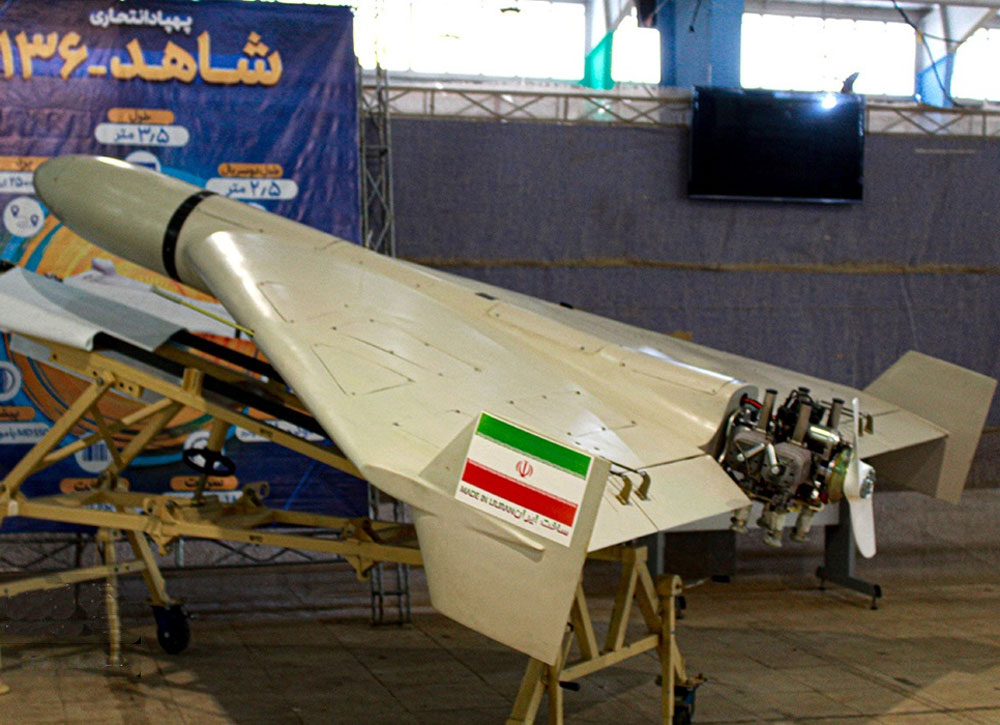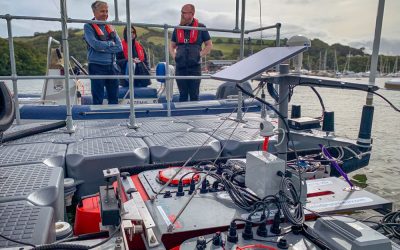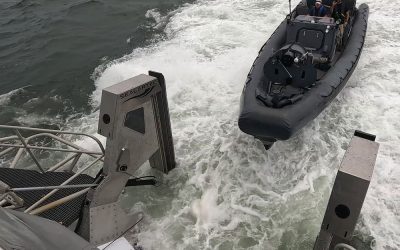The threat posed to global maritime trade by rogue states and terrorists has not changed much over the past 10 years, but the tools they use have. Mines, missiles, IED-ladened skiffs and RIBs are being replaced by drones – and, in little over three years, the drone has evolved from a flying camera used to take ship pics into a mass-produced, inexpensive killing machine, writes Patrik Wheater.
The first time a drone was used to target shipping was in July 2021 when the tanker Mercer Street, managed by an Israeli-linked company, was struck off Oman by an unmanned aerial vehicle (UAV), killing two crew. A year later, Ukrainian forces were modifying jet skis into remote-controlled surface drones, packing them with explosives and steering them towards Russian naval targets. By late 2023, most of the attacks on ships in the Red Sea, especially round the Gulf of Aden, used drones.
Houthi rebels used drones alongside missiles in a string of attacks, including in the 2023 hijacking and seizure of the car carrier Galaxy Leader. In the same year, the product tanker Swan Atlantic was hit in the southern Red Sea, with a drone approaching from astern and damaging a freshwater tank. In April 2024 containership MSC Orion was targeted by a HESA Shahed 136 drone in the western Indian Ocean, and in July 2025 the bulker Magic Sea was damaged in a combined attack using drones and remote-controlled boats before being boarded and abandoned.
For Fredrik Preiholt, senior analyst at the Norwegian War Risk Club (DNK), these incidents indicate a shift in method rather than motive. “It is a new tool, not a new threat,” he says. “The actors who use drones against shipping have always targeted shipping. If they didn’t have drones they would have used something else. The danger is that drones are cheap, easy to access and increasingly reliable.” There are typically two types of drones: airborne UAVs and unmanned surface vehicles (USVs), which are essentially remote-controlled boats adapted from commercial jet skis or speedboats. UAVs are usually used for surveillance and intelligence gathering purposes, to assess target suitability for attack, but they can be developed, according to Preiholt, as “one-way kamikaze drones”.
At their crudest, commercial quadcopter drones have been adapted to drop grenades or mortar rounds. At their most sophisticated, Iranian-made Shahed drones, which cost between US$20,000-40,000 each, are now widely used by Russia in Ukraine and supplied to Houthis in Yemen. But crude line-of-sight USVs, such as speedboats packed with explosives, are also being used to target ships. These waterborne IEDs are the main weapon against merchant vessels navigating the Red Sea and Indian Ocean. “Houthi USVs are limited to line-of-sight control,” says Preiholt. “But the Ukrainian designs, with Starlink communication links and better payloads, are closer to cruise missiles.”
Although drone attacks are relatively new, agitators and terrorists can block important shipping lanes, disrupt global trade, cause terror and sink a US$100 million asset for as little as US$10,0000. By contrast, a guided missile can cost north of US$500,000. The drone has resulted in sea traffic around the Red Sea dropping by half since the Houthis 2023, according to DNK analysis.
“There is a psychological effect, but missiles are actually scarier because they come with no warning,” says Preiholt. “With drones, you at least see them coming, which gives you a chance to react. But the sight of a UAV circling overhead has a clear effect on crew morale.”
For DNK, which insures some 3,500 ships in the Norwegian fleet, the role is to provide intelligence and analysis rather than prescribe defences. “Good affiliation checks can help establish if the vessel is likely to be on any potential target list, and access to reliable intelligence is more important than expensive defensive technology,” Preiholt explains, going on to advocate employing private security companies.
For the full article, see the October 2025 issue of The Naval Architect




